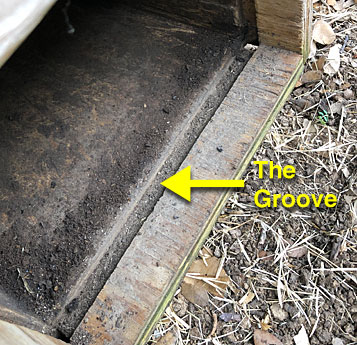Note: The following contains critical armadillo trapping advice. Ignore it at your own peril. You’ve been warned. There’s also a walking stick gif.
Alert Gazette readers will recall the account of my armadillo trapping woes, wherein the creatures were zooming in and out of the malfunctioning trap as if it were a port-a-potty next to a Tijuana taco stand*.
This situation quickly escalated from a frustrating inconvenience into a costly debacle as the armadillo(s) began to cause significant damage to the several thousand dollars worth of new zoysia sod installed in our yard. I’m not talking about a few holes here and there. The animals were actually burrowing under entire sections of sod and rolling them up like rugs. I was desperate for a solution.
I went so far as to use a Dremel tool to smooth any rough edges on the trap doors and the side channel guides to reduce the possibility of binding when they dropped down. I tested the trap and it seemed to work perfectly, but the next morning (and the morning after that), I found one door dropped and the other one halfway down and in a bind, indicating (or so I thought) another in-and-out armadillo escape. And our lawn continued to look like a used-up minefield. I finally gave up and ordered a new trap.
 The new trap arrived yesterday and as I unpacked and assembled it, I took the unprecedented step of reading the instructions and tips that came with it. This caught my eye: Armadillos are messy. When they are caught, they will cause dirt to fill the bottom door grooves. Clean them from time to time, or the doors will not close properly.
The new trap arrived yesterday and as I unpacked and assembled it, I took the unprecedented step of reading the instructions and tips that came with it. This caught my eye: Armadillos are messy. When they are caught, they will cause dirt to fill the bottom door grooves. Clean them from time to time, or the doors will not close properly.
“Whoa!” I thought, “what if the problem is not that the doors aren’t falling shut, but that they’re being forced open again by a trapped armadillo?” I had never considered this possibility, but when I inspected the trap I found that the bottom door grooves were indeed packed with dirt so that the doors dropped down level with the floor…and the armadillos were able to either nose one of them up, or reach under with a claw. The purpose of that groove was obviously to prevent the animal from lifting up the door from the bottom. And what I assumed was a trap door that stuck on the way down was actually one that had been put in a bind when it was lifted by the escaping animal.
It was a simple matter to test this theory. I cleaned out the grooves and placed the trap along the path where they normally ambled before diving into our lawn (they are definitely creatures of habit). And this morning when I looked outside, both doors were down and there was a snoozing-and-securely-trapped armadillo inside.
The irony is that while my enlightenment came as a result of reading the material that accompanied the new trap, the new trap trapped nothing last night, while the old trap did the work. Anyway, I’m not naive enough to think there’s only one armadillo in our neck of the neighborhood, and now I’ve got both sides of the yard armed and ready for additional action.
Oh, and here’s the updated headcount, in case you’re wondering:

And here’s a walking stick gif, because not everything is about mammals:

*I have no idea what this means, but I’m told it’s always a good idea to add a simile or metaphor or something to otherwise boring narrative.
Discover more from The Fire Ant Gazette
Subscribe to get the latest posts sent to your email.

Congratulations on trapping the Armadillo
Sandy&Gary